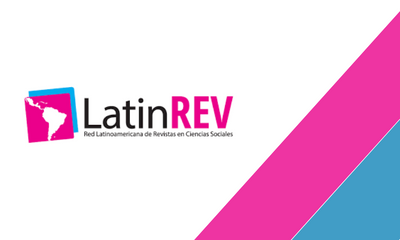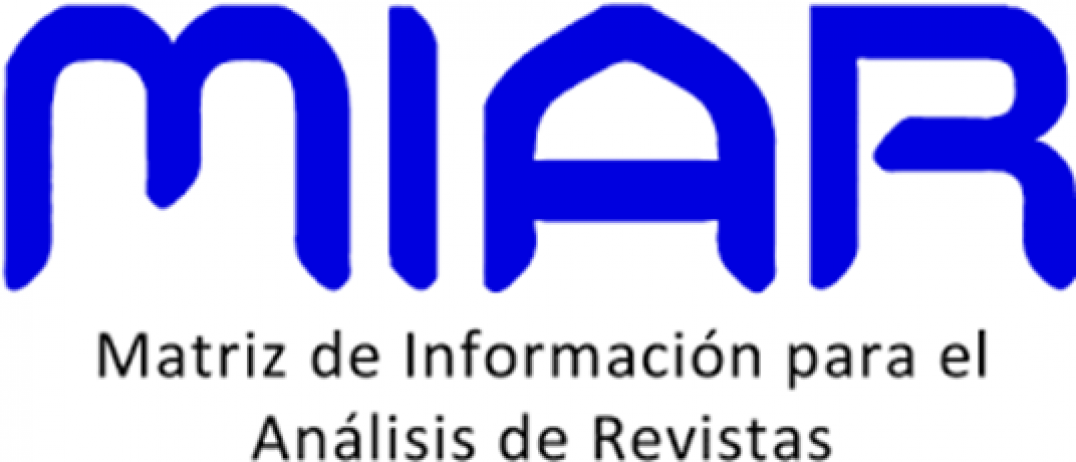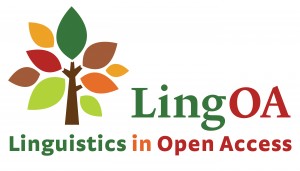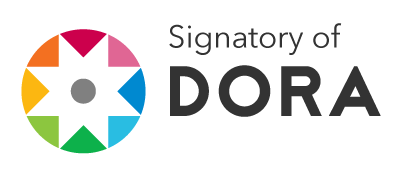La subtitulación como herramienta en la enseñanza de IPE
DOI:
https://doi.org/10.32870/vel.vi20.186Parole chiave:
Lengua extranjera, Traducción audiovisual, Subtitulación, Método gramática-traducciónAbstract
La enseñanza de la tecnología aplicada en la actualidad muestra su potencial educativo en el aula de traducción (Torres del Rey, 2005). Sin embargo, no sólo ha abierto su espacio en la enseñanza de la traducción, también permea en el aula de Lengua Extranjera, donde el método de enseñanza gramática-traducción (MGT) convive con otros enfoques y muestra su utilidad. La necesidad latente de aprender inglés, ha dado lugar a la implementación de diversos métodos de enseñanza en L2, y uno de los primeros fue el de gramática-traducción de acuerdo a Malmkjær (2010). La presente investigación-acción tiene como objetivo ofrecer una propuesta donde el material audiovisual brinda una herramienta en el aprendizaje de L2.
El presente estudio busca hacer visibles los beneficios de la subtitulación inglés-español en la adquisición de nuevo léxico por parte de los alumnos del programa de inglés en la Facultad de Ciencias del Mar (Facimar, de la Universidad Autónoma de Sinaloa). Además, se explora el MGT en la práctica de tiempos gramaticales y la comprensión oral. Los resultados del experimento muestran que: primero, los alumnos de licenciatura favorecen el uso de materiales audiovisuales subtitulados. Segundo: el uso de productos audiovisuales con subtítulos incidió en la adquisición de nuevo vocabulario, mejoró la comprensión oral e incluso favoreció la práctica de tiempos gramaticales. Por último, los medios audiovisuales con subtítulos ofrecen al alumno, con nivel básico en L2, un mayor sentido de confianza, lo que le permite establecer mejores conexiones entre L1 y L2 durante el proceso de aprendizaje.
Downloads
Metriche
Riferimenti bibliografici
Access services at the BBC. (2021). Recuperado de https://www.bbc.com/aboutthebbc/whatwedo/publicservices/accessservices.
Antonini, R. (2005). The perception of subtitled humor in Italy. 18(2), 209-225. https://doi.org/10.1515/humr.2005.18.2.209
Baltova, I. (1999). Multisensory Language Teaching in a Multidimensional Curriculum: The Use of Authentic Bimodal Video in Core French. Canadian Modern Language Review, 56(1), 31–48.
Bassnett, S. (2013). Translation Studies. London: Routledge.
Bonilla Carvajal, C. A. (2013). Método “traducción gramatical”, un histórico error lingüístico de perspectiva: orígenes, dinámicas e inconsistencias. Praxis & Saber, 4(8), 243–263. https://doi.org/10.19053/22160159.2660
Chaume Valera, F. (2004). Cine y traducción. Madrid: Cátedra.
Clark, J. M., y Paivio, A. (1991). Dual coding theory and education. Educational
Psychology Review, 3(3), 149–210.
Cortez-Godínez, J., y Caicedo Ocoró, J. (2021). Actitudes hacia la tecnología aplicada entre alumnos y docentes del área de traducción. Memorias del Primer Congreso Internacional de Innovación Tecnológica y Educación (CIITE 2021). Benemérita Universidad Autónoma de Puebla. p, 13. Disponible en: https://easychair.org/publications/preprint/PHqK
Danan, M. (1992). Reversed Subtitling and Dual Coding Theory: New Directions for Foreign Language Instruction. Language Learning. 42(4), 497-527. https://doi.org/10.1111/j.1467-1770.1992.tb01042.x
Danan, M. (2004). Captioning and Subtitling: Undervalued Language Learning
Strategies. Meta: Translator's Journal, 49(1), 67-77. DOI :
https://doi.org/10.7202/009021ar
Díaz-Castelazo, C. (2018). La importancia del idioma inglés para el desarrollo y
enseñanza de las ciencias. Revista Eduscientia. Divulgación De La Ciencia
Educativa, 1(2), 60–68. Recuperado a partir de
https://www.eduscientia.com/index.php/journal/article/view/27
Díaz-Cintas, J. (2003). Teoría y práctica de la subtitulación inglés-español.
España: Editorial Ariel.
Díaz-Cintas, J. (2012). Los subtítulos y la subtitulación en la clase de lengua extranjera. Abehache, 2(3). 95-114.
Gapper, S. E. (1990). Anexo a La teoría y el arte de la traducción de Peter Newmark: Bibliografía esencial sobre la traducción. Letras, 1 (23-24), 59-66.
Green, H. (21 de marzo de 2022). Underwater Discovery and Adventure: The Story of Jacques Cousteau. SciShow. Recuperado el 21/03/22 de https://www.youtube.com/watch?v=9z08SD5iRuk
Gordin, M. (2015). Scienti?c Babel: How Science Was Done Before and After Global English. Chicago/London: University of Chicago Press.
Hurtado Albir, A. (2001). Traducción y traductología: introducción a la traductología.
Madrid: Editorial Cátedra.
Hutchins, J. (1995). Machine Translation: A Brief History. From the Sumerians to the
Cognitivists, 431-445. https://doi.org/10.1016/B978-0-08-042580-1.50066-0
Krashen, S. D. (1986). The Input Hypothesis: Issues and Implications. TESOL Quarterly, 20(1), 116-122.
UK Parliament (England) (2020). Language teaching in schools: Research Briefing.
House Common Library. Disponible en: https://commonslibrary.parliament.uk/research-briefings/cbp-7388/
Malmkjær, K. (2010). Language Learning and Translation. En Handbook of Translation Studies, Volumen I (Eds.) Gambier, Y. y Van Doorslaer, L. John Benjamins Publishing Company.
Mayer, R. E. (2001). Multimedia Learning. Cambridge: Cambridge University Press
Mayoral Ascencio, R. (1998). Traducción audiovisual, traducción subordinada y traducción intercultural. Facultad de Filología de la Universidad de Sevilla. Recuperado de https://bit.ly/3FmpLCH
Miralles, G. T. (2018). Aprendizaje y perfeccionamiento de lenguas: la subtitulación en el Grado en Maestro de Educación Primaria. LFE: Revista de lenguas para fines específicos. 24(29), 73-91.
Munday, J. (2009). The Routledge Companion to Translation Studies (Routledge
Companions) New York: Routledge.
Naimushin, B. (2002). Translation in Foreign Language Teaching: The Fifth Skill.
Current Issues. 11(4), 46-49. Disponible en:
file:///C:/Users/JOSE/Dropbox/PC/Downloads/Naimushin_Translation_Fifth_Skill.pdf
Newmark, P. (1990). La teoría y el arte de la traducción. Letras, 1 (23-24), 27-58.
Oliver González, A., More López, J., y Climent Roca, S. (2007). Traduccion y tecnologías. Barcelona: Editorial UOC.
Orrego Carmona, D. (2013). Avance de la traducción audiovisual: desde los inicios hasta la era digital. Mutatis Mutandis. 6(2), 297-320.
Soler Pardo, B. (2017). La traducción audiovisual en la enseñanza de una LE: la subtitulación como herramienta metodológica para la adquisición de léxico. Tejuelo. Didáctica de la Lengua y la Literatura. 26, 163-192.
Ramírez Ortiz, R. M. (2009). La utilización de los materiales audiovisuales en el área de inglés. Innovación y experiencias educativas. 24, 1-13. Disponible en https://bit.ly/3myIXWg
Richards, J. y T. Rodgers (2001). Approaches and Methods in Language
Teaching. New York: Cambridge University Press.
Talaván, Zanón, N. (2009). Aplicaciones de la traducción audiovisual para mejorar la compresión oral del inglés. (Tesis doctoral). Universidad Nacional de Educación a Distancia, Madrid, España.
Talaván, Zanón, N. 2010). Subtitling as a task and subtitles as support: pedagogical applications. En J., Díaz-Cintas, Jorge, A., Matamala, J., Neves (eds.) New insights into audiovisual translation and media accessibility: Media for All 2. (pp. 285-299). Amsterdam-Nueva York: Rodopi.
Talaván, Zanón, N. (2011). La influencia efectiva de los subtítulos en el aprendizaje de lenguas extranjeras: análisis de investigaciones previas. Sendebar. 22, 265-282. DOI: https://doi.org/10.30827/sendebar.v22i0.354
Talaván Zanón, N. (2013). La subtitulación en el aprendizaje de lenguas extranjeras. Barcelona: Octaedro.
Tomalin, B. (1986). Video, TV and radio in the English class. London: Macmillan Publishers Ltd.
Torres del Rey, J. (2005) Nuevas orientaciones de la formación en tecnologías de la traducción: procesos, objetos y aplicaciones, En C.
Vilvandre de Sousa, C. et al. (eds.) El español, lengua de cultura, lengua de traducción. (525-539). Granada: Atrio.
Wang, Y. y Shen, C. (2007). Tentative model of integrating authentic captioned video to facilitate ESL learning. En Sino-Us English Teaching, 4(9), 1-13.
Zabalbeascoa Terrán, P. (1993). Developing Translation Studies to Better Account for Audiovisual Texts and Other New Forms of Text Production. Tesis doctoral (Universitat de LIeida).
Zojer, H. (2009). The methodological potential of translation in second language acquisition: Re-evaluating translation as a teaching tool en (Eds.) A. Witte, T. Harden y A. Ramos. Translation in Second Language Learning and Teaching. Berna: Peter Lang.
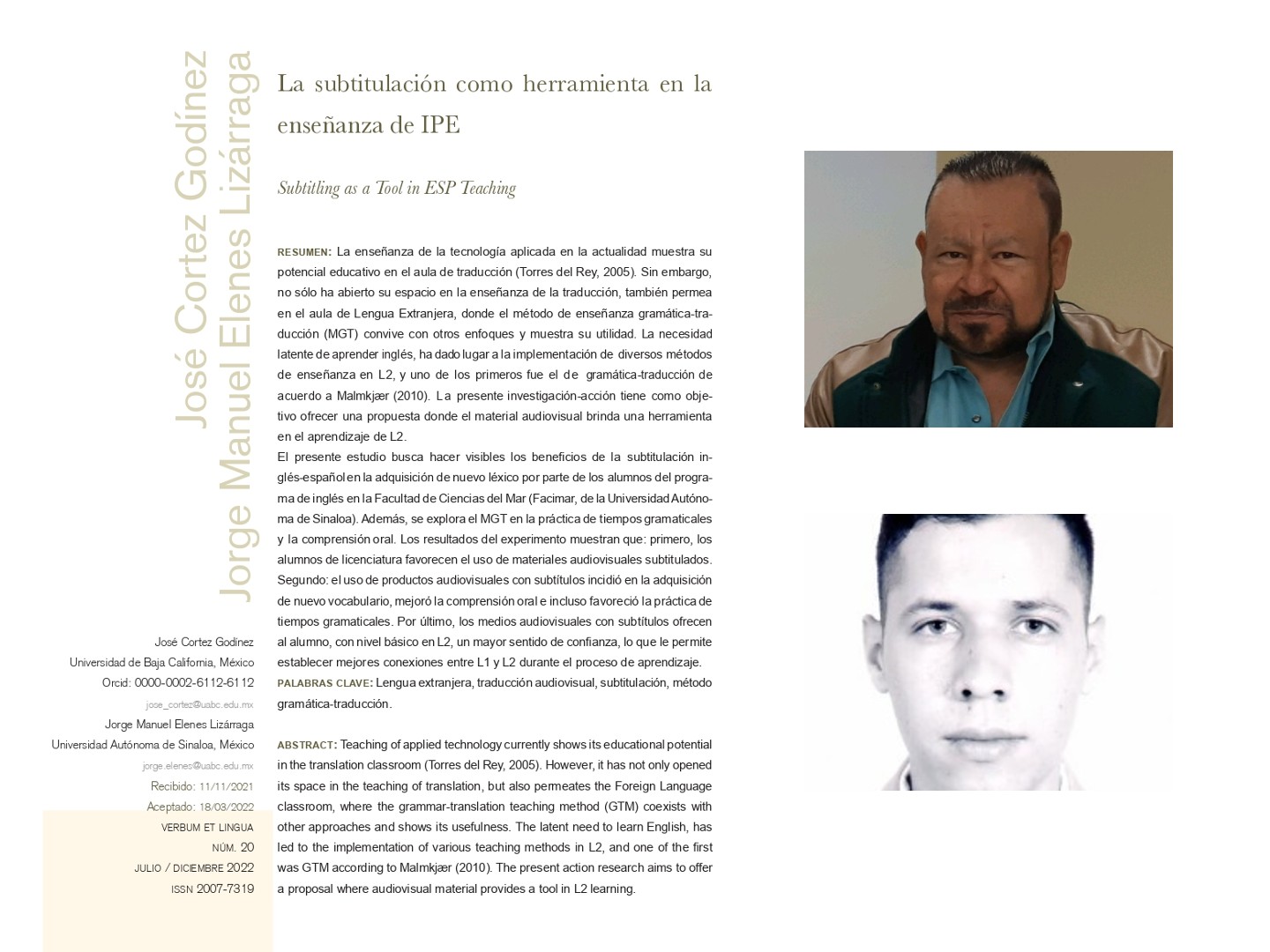
Downloads
Pubblicato
Versioni
- 2024-08-30 (2)
- 2022-06-01 (1)





